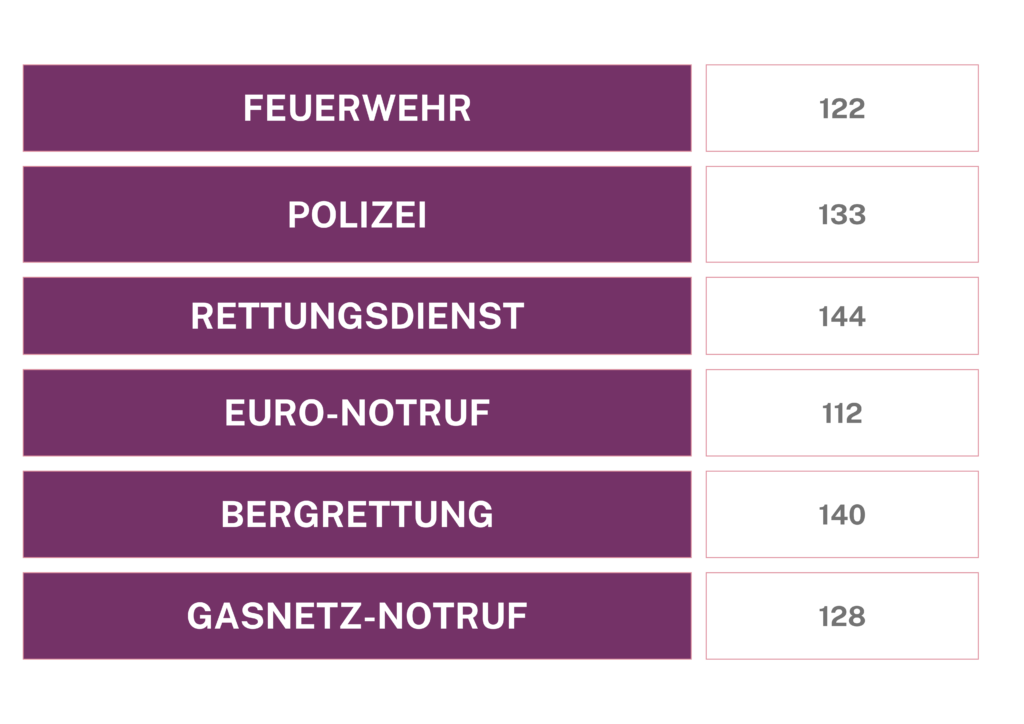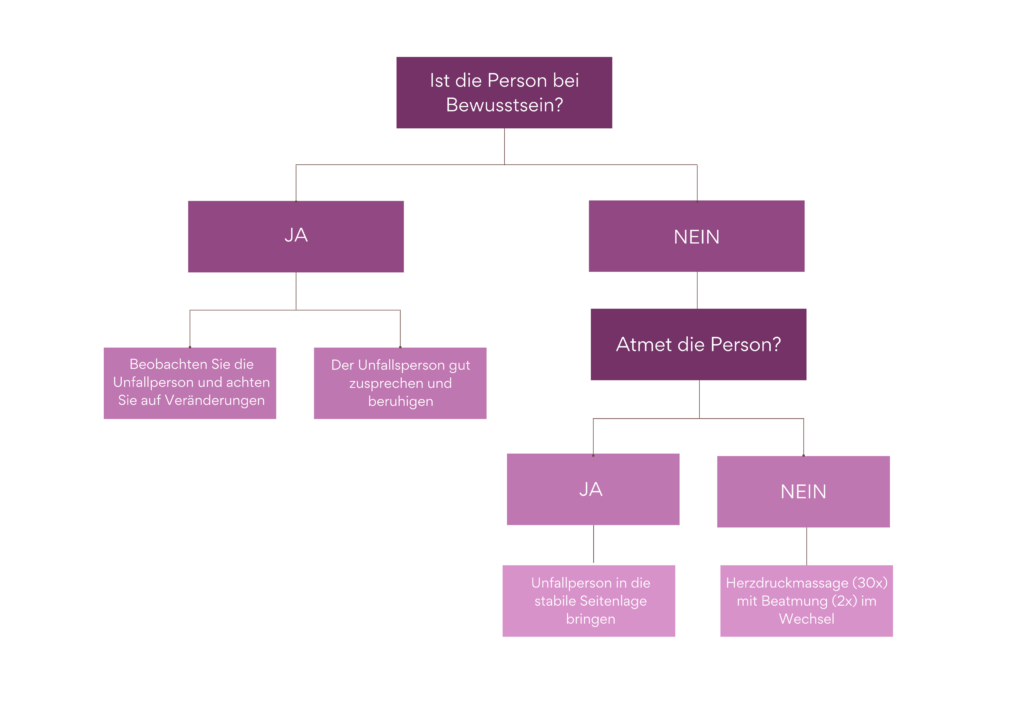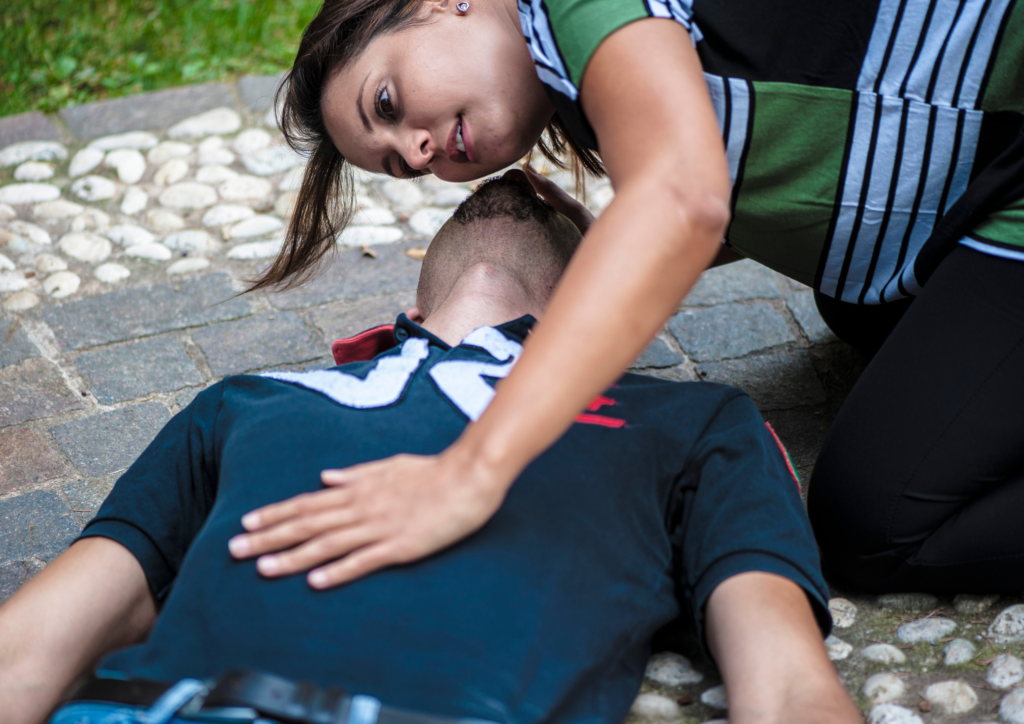What to do in an emergency?
Here you will find the most important information for providing effective assistance in an emergency.
Table of contents
First things first: stay calm! Try not to panic and take a deep breath first. The first thing you should do now is Emergency call.

Make an emergency call
When making an emergency call, it is important to answer as briefly and precisely as possible. The more precisely you describe the accident situation, the faster the emergency services can be at the right place.
The 4 W-questions help with this:
WHO is calling?
First of all, you should state your first and last name and telephone number so that you can be contacted by the emergency call centre in the event of queries.
WHERE is the scene of the accident?
Remember, the emergency services will already be dispatched during your call. The location of the accident should therefore be named quickly and described as precisely as possible. It would be best if you can give the exact address.. It would be best if you could give us the exact address.
Tips that can help you: Place names, street signs, street names, shops, house numbers and floors, districts, prominent buildings or bus, railway or tram stations.
Accidents on the motorway: Also think about your safety! Be sure to switch on your vehicle's hazard warning lights and wear a high-visibility waistcoat. State the direction of travel and the mileage. You can also describe the nearest motorway sign you see.
NoteIf you dial 112, the call location is automatically forwarded.
WHAT happened?
Explain briefly and concisely to the emergency call centre what has happened. State the type of accident (road traffic accident, heart attack, etc.) and wait for instructions. Don't leave anything out and mention any necessary details so that the necessary equipment can be sent and the situation can be assessed.
HOW MANY injured?
This enables the emergency centre to send the necessary number of emergency vehicles to the scene of the accident.
Further tips
- Do not hang up and wait for the emergency call centre to end the call
- Use the hands-free function to follow the instructions of the emergency call centre at the same time
- Stay calm and listen carefully to the person you are talking to
Provide first aid
Once you have made the emergency call, it is now important to take care of the person involved in the accident.
Please note the following:
- Pay attention to your own safety!
- If an unconscious casualty is in a danger zone, bring them to safety immediately. Cross your arms over the casualty's head and pull them out of the danger zone by the wrists. Make sure you also turn them onto their back to check their breathing
Control consciousness
Talk to and touch the person involved in the accident.
If the person is conscious:
- Always stay with the casualty and talk to them until the emergency services arrive
- Observe the accident victim and pay attention to changes
If the person involved in the accident not conscious is, act as follows:
Control breathing
Check breathing: Listen and feel whether the person is breathing normally. Observe whether the chest rises or whether the air from breathing can be felt!
Is the person breathing?
Person is breathing: recovery position
To place an unconscious person in the lateral position, proceed as follows:
- Pull the casualty's hand over his chest and place it on his cheek. The first step is to stabilise the casualty's head
- Put one knee up. The second step makes it possible to pull the casualty safely into a lateral position
- Pull the unconscious patient by the leg into a lateral position so that the head rests on the hand and the bent knee supports the position of the casualty. The third step ensures that the accident victim's head does not fall forwards
- Tilt your head back and open your mouth. The fourth step is used to open the casualty's airways
Person is not breathing: chest compressions with artificial respiration
- Create a Place the ball of your hand in the centre of your chest and Remove all items of clothing that get in the way from the upper body of the unconscious person
- Place the other hand over it and stretch both arms
- Bend your upper body over the casualty and Press quickly and firmly on the chest with both hands
- Pull your chin upwardswhile holding the Pinch nostrils
- Bring your breath into the mouth of the casualtyso that the chest rises as with normal breathing
Perform chest compressions 30 times and ventilation 2 times alternately.
Finally, it is important to mention that you act and provide assistance in any case. In an emergency, every minute counts. However, take care of your own safety immediately.
Summary






